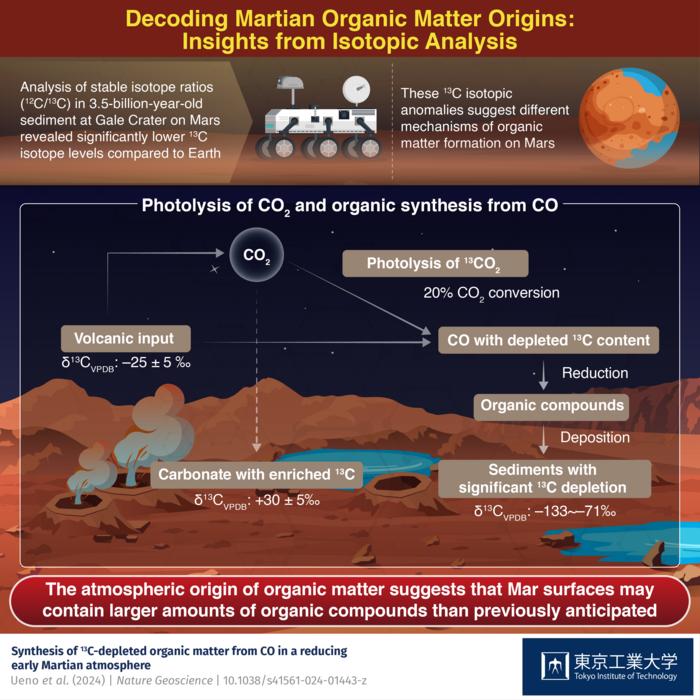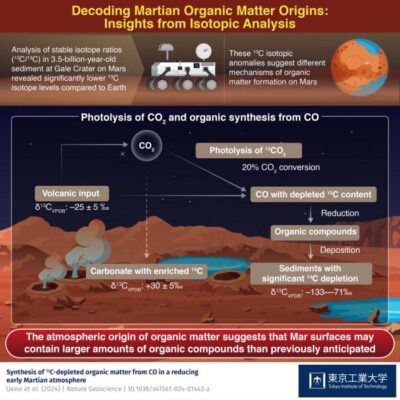Decoding Mars’ Organic Mysteries


In a study published in the journal Nature Geoscience, a team of researchers led by Professor Yuichiro Ueno from Tokyo Institute of Technology and Professor Matthew Johnson from the University of Copenhagen has shed new light on the puzzling composition of organic matter found in Martian sediments. The findings, which point to atmospheric processes rather than biological ones as the main source of organic matter formation on early Mars, provide a tantalizing glimpse into the planet’s enigmatic past.
The Curiosity of Gale Crater
The Curiosity rover’s exploration of Gale Crater, an ancient lakebed formed approximately 3.8 billion years ago, has yielded intriguing insights into Mars’ geological history. Sediments collected from the crater revealed the presence of organic matter, but with a significantly lower amount of the carbon-13 isotope (13C) relative to carbon-12 isotopes (12C) compared to what is found on Earth.
As Professor Ueno explains, “On measuring the stable isotope ratio between 13C and 12C, the Martian organic matter has a 13C abundance of 0.92% to 0.99% of the carbon that makes it up. This is extremely low compared to Earth’s sedimentary organic matter, which is about 1.04%, and atmospheric CO2, around 1.07%, both of which are biological remnants, and are not similar to the organic matter in meteorites, which is about 1.05%.”
Unraveling the Atmospheric Origins of Martian Organic Matter
To elucidate the discrepancy in isotopic composition, the researchers simulated different conditions of the Martian atmosphere’s composition and temperature in laboratory experiments. They discovered that when 12CO2 is exposed to solar ultraviolet (UV) light, it preferentially absorbs UV radiation, leading to its dissociation into CO depleted in 13C, leaving behind CO2 enriched in 13C.
This isotopic fractionation, also observed in the upper atmospheres of Mars and Earth, suggests that during the early Martian era, with surface temperatures close to the freezing point of water, simple organic compounds formed from CO may have dissolved in water and settled in sediments.
Model calculations by the researchers further support this hypothesis, closely matching the isotopic values seen in sediments analyzed by the Curiosity rover and estimated from a Martian meteorite. These findings point to an atmospheric process as the primary source of organic matter formation on early Mars, rather than a biological one.
As Professor Ueno notes, “If the estimation in this research is correct, there may be an unexpected amount of organic material present in Martian sediments. This suggests that future explorations of Mars might uncover large quantities of organic matter.”
The study’s revelations not only deepen our understanding of Mars’ geological past but also pave the way for future explorations that may uncover even more surprising discoveries about the Red Planet’s history and potential for harboring life in its ancient past.
